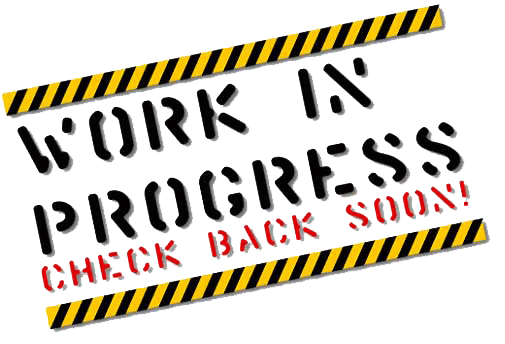
Art of Hosting: Bag of Treats
| Ice Breakers | Links | Tips | Facilitation kit | How to prepare |
|---|
Ice-breakers and various Activities
(but do you need one ?)
(sometimes, clicking on the activity will give more info :-)- Rope dance
- 4 levels of hello
- Time placement
- Geographical placement
- Animals
- ID yourself
- Fill a matrix with 2 things in common:
Name John Sarah Magdi John X Sarah X Magdi X - This is a Tic / This is a Toc / This is a What ?
- 30 team building activities
- 54 ideas for creative activities
- 101 creative activities
- More activities @ wilderdom
- More activities @ TheFoodProject
- More activities @ InnovativeTeamBuilding
- More activities @ gefuehlmonster
- The Human Machines
- Coin Logo [5-10 minutes]
- Sneak a Peek Game [10 minutes]
- Classification Game [10-15 minutes]
- The One Question Ice Breaker Activity [15-20 minutes]
- Two Truths and a Lie [15-30 minutes]
- Life Highlights Game [30 minutes]
- Picture Pieces Game [30 minutes]
- Zoom [30 minutes]
- The Great Egg Drop [2 hours]
- Hollow Square [2-3 hours]
- A Truth and Lie
- Poker Tower
- Group Painting Activity for Adults
- Helium Stick
- Mine Field
- Salt and Pepper
- Talking in Circles
- Name and adjective
- Bingo
- A day in the life
- Shared Values
- Washing machine
- 30 more activities sorted
- 64 more activities sorted
Links
Generic Aoh:
- Art of hosting @ning
- Art of hosting
- Art of hosting (scoop.it)
- Art of hosting (fr)
- AoPL and Hosting daily
- Art of hosting around the world (map)
- Co-Creation tools
Café:
Open Space:
- Freemind
- FreePlane
- XMind
- Mind42
- MindMup
- Coggle
- Popplet
- MindJet
- MindmapMemo
- Excellent MM site en espagnol
- Text to Mindmap give ascii text and get a mind map!
- Petillant: tout sur les cartes mentales
- 11 Free Mind Mapping Applications & Web Services
- 30+ Mind Mapping Tools
- Die 10 besten Programme, um Mind Maps zu erstellen
- 15 Great Mindmapping Tools and Apps
- Software for mindmapping and information organisation
- 8 Mind mapping tools
- Comparison chart of MM tools
Communities of Practice:
Wordle generator:
Collaborative environment
- Dotmocracy
Dotmocracy is a transparent, equal opportunity, and participatory large group decision-making tool.
Seems promising, but not fully tested. Website has great templates for harvesting sheets..
Tips (To be developed section)
For each activity, make sure you explain:
- Context
- Equipment
- Timing
- Sharing
- Impact
- Need
- Timing
- Range
- Objectives
- Unconsciously Incompetent
- Consciously Incompetent
- Consciously Competent
- Unconsciously Competent
Facilitation kit
You may want to make yourself a facilitation kit. The minimum to survive is:- paper : both simple paper sheet, bigger sheets flipchart style, and smaller / cardboard style
- pens: a set of color markers (sharpie type) for you to make a mindmap, and about 10 big black/green/red/blue markers fort the participants
- a couple of rolls of masking tape
- a pair of scissors
- name tags
- adhesive dots for voting
- big post it - several colors
- a bag / suitcase / case to store/transport it
- Creativity cards
You will also need a can of Adhesive Repositionable Spray. Look for Pattex or 3M. Price vary widely and wildly, from €11 (Castorama, pattex) to €45 (3m, amazon.de), so keep your eyes open!
Other ideas to make your own facilitation kit:
You can also buy one online (more expensive):
- Discount Office Several from €40 to €289
- Legamaster 225000 Good value @€60 (got one :-))
Note: legamaster has a whole range, look for 225000-225200-225300-etc. - Discount Office The full monty (€119)
- PinPoint 1 day (£95)
- PinPoint 3 day (£125)
- BLT facilitation kit (£299 +VAT)
How to prepare ?
This is always a favorite of OST theme, so i'll repeat a couple of things:- Know the purpose
- Never work alone
Well it isn't. I could give you dozens of examples where even inside the host group we didn't have clarity about the purpose. I remember fierce discussions with co-hosts after interviewing some of the actors in preparation for the seminar, where obviously their wishes were contradictory to what our client wanted. I remember walking out of a project because the caller changed the scope and the purpose at the last minute.
Sounds bad ? Well it is. It is part of my rules.
If we don't agree on what we are doing this for, there is no point doing it. Period.
On most of the rest (except harvesting), i'm quite easy-going :-)
Once you have a clarity on the purpose, the "how to get there" will fall in place pretty much by itself with a back-and-forth check on the constraints (or not ?).
Some tips on meeting facilitation.
An event is usually hosted by a team. I'm lucky because I usually work with big team (4-8 people). It is great, but it requires a higher degree of organisation. And of course, we don't all live in the same place (or in the same countries for that matter).
Over time, I have put together a list of tools which are useful to enable collaborative work in those conditions.
Typically I set up the mindmap first and invite the members of the team. We use it to jot down ideas, in our own time or all together while we do a collective call. Here is my checklist. None of those is essential, all are useful.
Disclaimer: I'm a computer scientist. I manage several internet domains. I can create a website with a wiki and dedicated mailing list in a matter of minutes. I understand not everybody can do that, but it is no reason not to list the ressources here as well :-).
This is not an endorsement of any of the products. Batteries not included. Your mileage may vary. Pictures not contractual. Some assembly required. etc.
| D | What | Example | Remarks |
|---|---|---|---|
| Cheap written Communication | Lino it is a post-it board. public or with groups. Simple as a post-it. Not really documents, not really wiki. Impossible to classify, but super-easy. Free registration. Trello is similar, and so are Padlet and Co-Sketch Zouch is a cool todo with attribution - test it ! free, no registration. |
||
| Cheap oral communication |
|
||
| Common Mindmap | Rather than circulate files. Requires a free account. | ||
| Common documents | Rather than circulate files. Require a free account. Ether Pad is the software that provides real time editor for up to 15 people. TitanPad and EduPad are free online implementation of it. | ||
| Web hosted collaborative environment |
|
||
| Collaborative environment |
|
||
| Wiki |
|
Tiddly is a one-file wiki. Just upload the html file to your private website, and off you go. PMWiki is much more complete and powerfull, but requires a bit longer to install and customize. | |
| Project management | Collabtive is limited in the free version, but probably more than enough. ProjeQTor is more complete, but takes longer to install ProjectForge is VERY complete, but harder to customize.(java bundle avail.) | ||
| Unclassified |
|
| Legend: | easy |
| medium | |
| difficult |





